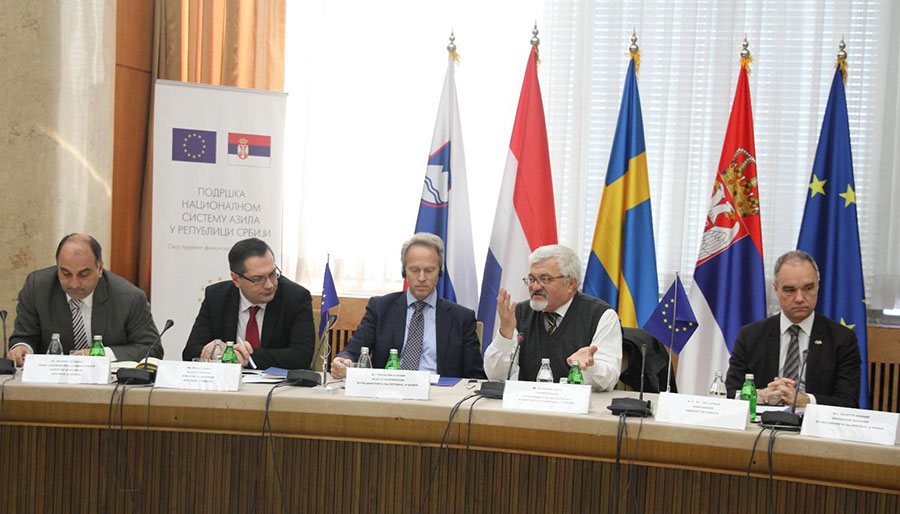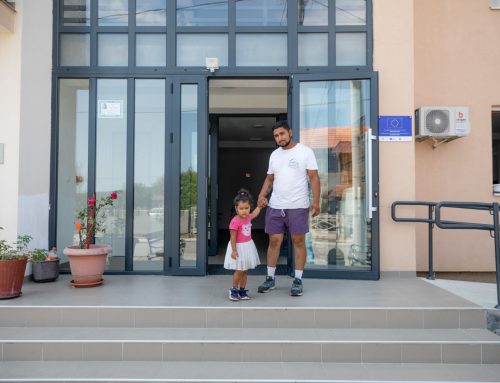Draft Law on Temporary Protection, which has entered the parliamentary procedure, is one of the results produced by the Twinning project “Support for the National Asylum System in Serbia”. Participants in the closing conference of the 29-month EUR1 million-worth project funded by the EU said that the law should be adopted soon with its implementation following right after.
Commissioner for Refugees and Migration Vladimir Cucic said that the project proved that the asylum system in Serbia was solid, adding that it would now be further improved. He described the fact that the project was implemented in parallel with the migrant crisis of 2015 as a good thing.
“We have carried out all of the five tasks in order to improve our asylum system and align it with EU standards,” Cucic said.
He said that capacity of institutions dealing with asylum seeker-related issues has been enhanced as well as the capacity of those dealing with unaccompanied underage asylum seekers. He added that proper mechanisms supporting the integration of persons, who are granted international protection, have also been set up.
According to Cucic, the legal framework has been developed in line with EU acquis and efforts are being made towards raising public awareness about the issue of migration.
Cucic said that in Serbia, unlike some developed countries, there were no xenophobic incidents and attacks on migrant centres.
Director of the Border Police Directorate Milenko Bozovic said that all project tasks had been accomplished, above all the draft Law on Asylum and Temporary Protection, which has been developed in line with EU directives. Also, he said, the project has developed manuals for the Ministry staff, given that they are usually the ones who make the first contact with asylum seekers.

FoNet
“Serbia is a reliable partner of the EU and by doing this, we meet our obligations foreseen by chapter 24,” he said.
On behalf of the EU Delegation to Serbia, Yngve Engstrom commended Serbia’s role in the migrant crisis and its approach to it, assessing the adoption of the initial text of the Law on Asylum as an important step.
He said that in order to efficiently engage in fight against illegal migration and smuggling, Serbia should implement the Strategy and its accompanying Action Plan.
“Serbia has developed a solid system of integrated border management and the EU has supported those efforts with EUR28 million in order to ensure free movement of people, goods and capital and a proper control in accordance with EU rules at the same time,” Engstrom said.
Swedish Ambassador Jan Lundin said that in 2015 Sweden was faced with 163,000 asylum applications, twice as many as in 2014, while in the period between September and December 2015, 114,000 people who have travelled through the Western Balkans route entered Sweden.
“No one could predict such a massive influx of people, that is why our countries were put to test,” said Lundin and stressed that the crisis made us learn the lesson about how uncontrolled migration affects each and every aspect of society.
“It affects economy, Schengen cooperation, Brexit, the rise of populist and ultra-nationalist movements, putting political systems to the test,” Lundin said and noted that the principles of solidarity and shared responsibility are crucial when dealing with migration issues.
The project “Support for the National Asylum System in Serbia” ran from 2 September 2015 for 29 months and was implemented by the Commissariat for Refugees and Migrating, the Ministry of Interior, Swedish Agency for Migration, Dutch Immigration and Naturalisation Service and the Ministry of Interior of Slovenia.




